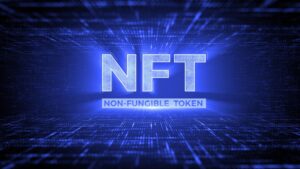Non-fungible tokens (NFTs) have been making headlines recently, with artists, musicians, and collectors embracing this new form of digital asset. But how exactly do NFTs look like and how can you distinguish them from other types of tokens? In this article, we will explore the visual characteristics of NFTs in detail.
What are NFTs?
Before we get into how NFTs look like, let’s first understand what NFTs are. NFTs are unique digital assets that are stored on a blockchain. Unlike fungible tokens such as Bitcoin or Ethereum, each NFT has a distinct value and cannot be exchanged on a one-to-one basis. This uniqueness is what makes NFTs so special and valuable in the digital world.
Visual Characteristics of NFTs
One of the key visual characteristics of NFTs is their digital artwork. NFTs can represent digital art, animations, videos, music, and even virtual real estate. When you own an NFT, you also own the rights to the digital asset it represents. This means that you can display, sell, or transfer the NFT as you wish.
Additionally, NFTs often come with metadata that provides information about the digital asset, such as the creator, the date of creation, and any additional details the creator wants to include. This metadata is stored on the blockchain along with the NFT, ensuring transparency and immutability.
How to Identify an NFT
Identifying an NFT is relatively straightforward, as most NFT platforms display a visual representation of the digital asset along with its metadata. When you browse NFTs on a marketplace or in a digital wallet, you will see a thumbnail image or video preview of the NFT, accompanied by information such as the title, description, and creator.
Each NFT also has a unique token ID that distinguishes it from other NFTs on the blockchain. This token ID serves as a digital fingerprint for the NFT, allowing you to verify its authenticity and ownership status.
Collecting and Trading NFTs
Collecting and trading NFTs has become a popular activity among digital art enthusiasts and cryptocurrency investors. NFT marketplaces such as OpenSea, Rarible, and Foundation allow users to buy, sell, and auction NFTs using cryptocurrency such as Ethereum.
When you purchase an NFT, it is stored in a digital wallet that is compatible with the blockchain on which the NFT was created. You can then showcase your NFT collection in virtual galleries, share them on social media, or even loan them out to other collectors.
Conclusion
In conclusion, NFTs are unique digital assets that come in various forms, from digital art to music to virtual real estate. The visual characteristics of NFTs, along with their metadata and token ID, make them easily distinguishable on blockchain platforms. As NFTs continue to gain popularity, more creators and collectors are exploring the possibilities of this exciting new technology.
Kripto para birimleriyle işlem yapmaya meraklıysanız ve bu heyecan verici dünyaya adım atmak istiyorsanız, Binance hesabı açmaya başlayabilirsiniz. Binance hesabınızı şimdi açın!


